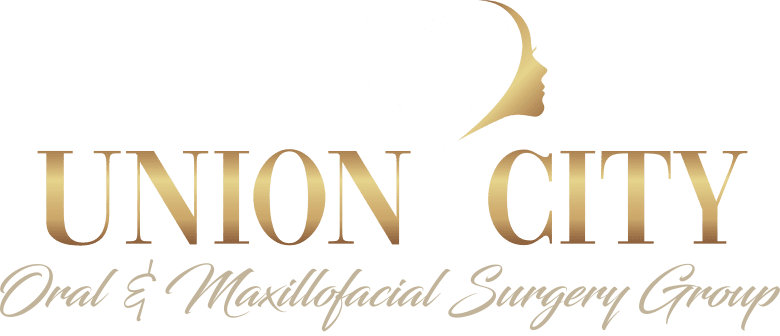Motor vehicle accidents are the leading cause of maxillofacial injuries worldwide, accounting for the majority of facial trauma cases. The tremendous force generated during collisions can cause severe damage to facial bones and soft tissues, particularly when occupants are unrestrained or vehicles lack modern safety features.
At Legacy Oral Surgery Group, we understand the devastating impact maxillofacial injuries can have on both your physical appearance and functional abilities. Our team of highly trained oral surgeons specializes in diagnosing and treating all types of facial trauma, from minor fractures to complex reconstructions. With offices in Union City and Elizabeth, we provide expert care to patients throughout New Jersey using the latest surgical techniques and technologies.
Common Causes of Maxillofacial Injuries
While motor vehicle accidents remain the primary cause of facial trauma, several other common causes contribute significantly to maxillofacial injury statistics. Understanding these risk factors can help in prevention and early intervention.
Motor Vehicle Accidents
Vehicle collisions generate tremendous force that often results in facial trauma, particularly when:
- Occupants aren’t wearing seatbelts, causing them to strike the steering wheel, dashboard, or windshield
- Side-impact collisions occur, potentially causing damage to the lateral aspects of the face
- Airbags deploy improperly or too forcefully
- Motorcycle accidents happen without proper helmet protection
Despite improvements in vehicle safety features over recent decades, motor vehicle accidents continue to cause the most severe and complex maxillofacial injuries requiring surgical intervention.
Physical Altercations
Interpersonal violence accounts for approximately 10-15% of facial trauma cases. Blunt force impacts from punches, kicks, or strikes with objects frequently result in nasal fractures, orbital (eye socket) fractures, and mandibular (jawbone) fractures. These injuries often require immediate surgical attention to prevent long-term functional or aesthetic complications.
Sports Injuries
Contact sports like football, hockey, boxing, and martial arts contribute significantly to facial trauma statistics. Common sports-related maxillofacial injuries include:
- Nasal fractures from direct impacts
- Zygomatic (cheekbone) fractures
- Dental trauma including tooth avulsion (complete displacement)
- Mandibular fractures, particularly in combat sports
Wearing appropriate protective gear such as mouthguards, face shields, and helmets can substantially reduce the risk of sports-related facial injuries.
Falls
Falls represent another common cause of maxillofacial trauma, particularly among young children and older adults. Whether from heights, down stairs, or simply tripping on level ground, falls frequently result in facial injuries as people instinctively have difficulty protecting their face during sudden, unexpected descents.
Types of Maxillofacial Injuries
Understanding the variety of maxillofacial injuries helps patients recognize when to seek specialized care from an oral surgeon rather than general emergency services alone.
Fractures
Facial bone fractures can affect any of the 14 bones comprising the facial skeleton. The most common fractures include:
- Nasal fractures occur most frequently due to the nose’s prominent position. These fractures may require reduction (realignment) if significant displacement exists.
- Orbital fractures affect the bones surrounding the eye socket. These injuries may cause visual disturbances, restricted eye movement, or facial asymmetry if not properly treated.
- Mandibular fractures involve breaks in the jawbone, potentially causing malocclusion (improper bite alignment), pain with chewing, and difficulty opening the mouth.
There are also Zygomaticomaxillary complex fractures (cheekbone and upper jaw), which often result from direct impacts and may cause facial asymmetry, numbness, and restricted jaw movement.
Soft Tissue Injuries
Facial lacerations, contusions, and abrasions often accompany bone fractures. These injuries require careful evaluation and treatment to minimize scarring and preserve function.
Dental and Alveolar Trauma
Trauma to teeth and the surrounding bone (alveolar ridge) is common in facial injuries. These may include fractured, luxated (loosened), or avulsed (knocked-out) teeth, requiring immediate specialized care to save the affected teeth.
Treatment Options for Maxillofacial Injuries
Modern approaches to maxillofacial trauma focus on both functional restoration and aesthetic outcomes. Treatment typically depends on the severity and location of the injury.
For simple fractures with minimal displacement, conservative management with medication and close monitoring may be sufficient. However, more complex injuries often require surgical intervention to restore proper form and function.
Advanced surgical techniques may include open reduction and internal fixation (ORIF) using titanium plates and screws, which provides stable repair while allowing for proper healing. In some cases, bone grafting may be necessary to replace lost or severely damaged bone.
Contact Legacy Oral Surgery Group for Expert Maxillofacial Care
At Legacy Oral Surgery Group, our team brings decades of combined experience in treating complex maxillofacial injuries. We understand the physical and emotional impact of facial trauma and are committed to providing compassionate, comprehensive care. Our family-owned practice prioritizes patient comfort and optimal outcomes, using the latest surgical techniques and technology.
Don’t let facial injuries impact your quality of life. If you’ve experienced maxillofacial trauma or need follow-up care, contact Legacy Oral Surgery Group today at (201) 601-9262 or complete our contact form to schedule a consultation.


